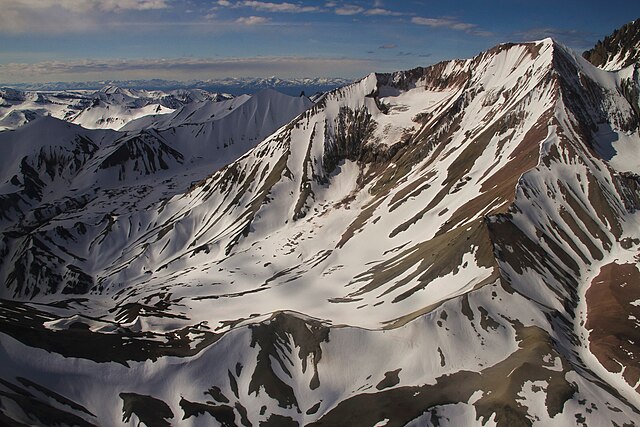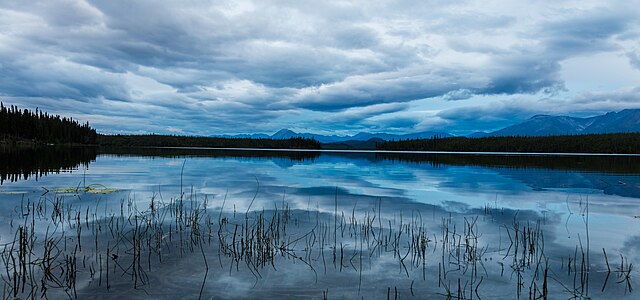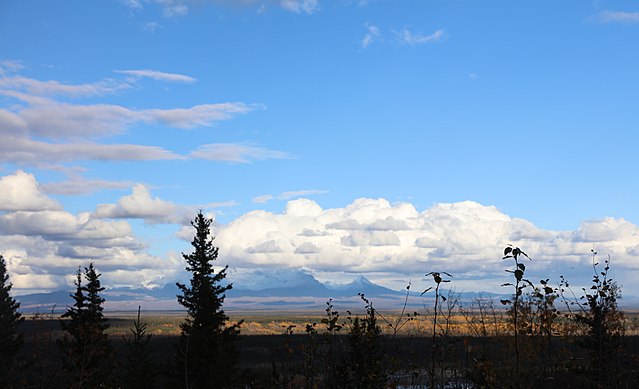Imagine standing in a place so vast it swallows entire countries, where glaciers carve through mountains like a sculptor’s chisel and peaks pierce the sky like nature’s skyscrapers. Welcome to Wrangell-St. Elias National Park and Preserve, the largest national park in the United States, sprawling across 13.2 million acres of raw, untamed Alaskan wilderness. It’s a land where adventure feels limitless, and every view feels like a postcard from the edge of the world. Ready to dive into this colossal playground? Let’s explore what makes Wrangell-St. Elias a must-visit for anyone craving nature’s grandest show.
Why Wrangell-St. Elias is a Bucket-List Destination
Wrangell-St. Elias isn’t just big—it’s gargantuan, dwarfing Yellowstone, Yosemite, and Switzerland combined. It’s a place where four mountain ranges collide, creating a dramatic landscape of jagged peaks, sprawling glaciers, and rivers that twist like veins through the earth. From Mount St. Elias, the second-highest peak in the U.S. at 18,008 feet, to the sprawling Malaspina Glacier, larger than Rhode Island, this park is a testament to nature’s power. Whether you’re an adrenaline junkie or a soul seeking solitude, this park offers something extraordinary. Ever wondered what it feels like to stand in a place where humans are mere specks in nature’s grand design? This is it.
A Land of Superlatives
Everything here feels larger than life. The park boasts nine of the 16 highest peaks in the U.S., including Mount Wrangell, an active volcano that occasionally puffs steam into the crisp Alaskan air. Its glaciers, like the Nabesna (the world’s longest valley glacier) and Hubbard (the longest tidewater glacier in Alaska), are living relics of the Ice Age. With 60% of America’s glacial ice, Wrangell-St. Elias is a frozen wonderland that humbles even the most seasoned travelers. It’s no wonder this park, alongside Canada’s Kluane National Park, earned a UNESCO World Heritage Site designation in 1979.
A Wilderness Untouched
Unlike more accessible national parks, Wrangell-St. Elias remains gloriously undeveloped. Only two gravel roads—McCarthy and Nabesna—pierce its interior, leaving most of the park accessible only by foot, plane, or sheer determination. This remoteness preserves its wild heart, where grizzly bears roam, Dall sheep cling to cliffs, and trumpeter swans glide across pristine lakes. It’s a place where you can still feel like an explorer charting unspoiled territory. Ready to trade crowded trails for a true wilderness escape?
Getting to Wrangell-St. Elias: The Journey is Part of the Adventure

Reaching Wrangell-St. Elias is no small feat, but that’s what makes it special. The park lies about 200 miles northeast of Anchorage, and the drive itself is a preview of Alaska’s rugged beauty. Most visitors start at the Wrangell-St. Elias Visitor Center in Copper Center, a hub of information with exhibits and ranger-led talks. From there, you’ve got options, but none are for the faint of heart. Ever driven a road where old railroad spikes might pop your tires? That’s the McCarthy Road for you.
McCarthy Road: A Bumpy Ride to Kennecott
The 60-mile McCarthy Road from Chitina to McCarthy is a gravel gauntlet, originally a railway bed for the Kennecott copper mines. It’s a two-hour drive of potholes, stunning views, and the occasional moose crossing. Rental car companies often balk at letting their vehicles tackle this road, so a 4×4 is your best bet. At the end, you’ll reach McCarthy, a quirky frontier town with a population of 21, and Kennecott, a historic mining ghost town. The road ends at a footbridge, so park your car and prepare to feel like you’ve stepped back in time.
Nabesna Road: The Quiet Alternative
For a less-traveled route, Nabesna Road stretches 42 miles from Slana into the park’s northern reaches. It’s quieter, with serene views of the Wrangell Mountains and chances to spot wildlife like Dall sheep. Stream crossings and rough patches make a high-clearance vehicle a smart choice. This road is less about destinations and more about soaking in the solitude of a landscape few ever see. Which route sounds like your kind of adventure?
Flying In: The Ultimate Shortcut
If roads aren’t your thing, hop on a bush plane. Services like Wrangell Mountain Air offer flights from Chitina or Glennallen to McCarthy or remote backcountry airstrips. From the air, you’ll witness the Bagley Ice Field and peaks that seem to scrape the heavens. It’s not cheap, but the views are worth every penny. Imagine soaring over a sea of ice and rock—does it get any more epic than that?
Top Things to Do in Wrangell-St. Elias
This park is an adventurer’s playground, with activities ranging from leisurely hikes to heart-pounding glacier climbs. Whether you’re here for a day or a week, there’s no shortage of ways to connect with this wild landscape. Let’s dive into the best experiences Wrangell-St. Elias has to offer.
Explore Kennecott Mines National Historic Landmark
Kennecott, a National Historic Landmark, is a time capsule of Alaska’s copper mining boom. Wander through the red-painted buildings, including the 14-story concentration mill, where copper was once extracted from limestone. Guided tours with St. Elias Alpine Guides let you step inside these relics, offering a glimpse into a bygone era. It’s like walking through a history book, with the Wrangell Mountains as your backdrop.
Hike or Ice Climb on Root Glacier
Root Glacier, accessible from Kennecott, is a must for glacier enthusiasts. A moderate hike takes you to its edge, where you can strap on crampons for a guided ice-climbing adventure. No experience? No problem—guides like Kennicott Wilderness Guides make it accessible for beginners. Scaling a 70-foot ice wall feels like conquering another planet. Ever dreamed of walking on a frozen river of time?
Flightseeing Over Glaciers and Peaks
A flightseeing tour with Wrangell Mountain Air is like flipping through nature’s greatest hits. You’ll soar over the Bagley Ice Field, Mount Wrangell, and countless glaciers that shimmer like diamonds. The scale of the park hits you from above—13.2 million acres of pure wilderness. It’s a humbling reminder of how small we are in the grand scheme of things.
Backpacking in the Backcountry
For true adventurers, Wrangell-St. Elias’s backcountry is calling. Trails like the Goat Trail down Chitistone Canyon offer jaw-dropping views and a chance to spot grizzly bears or golden eagles. With no developed campgrounds, you’ll need to be self-sufficient, but the reward is a wilderness experience few places on Earth can match. Ready to lose yourself in nature’s embrace?
Rafting the Rivers
The park’s rivers, like the Chitina and Copper, are perfect for rafting, from gentle floats to Class IV rapids. Guided trips from Copper Center let you paddle through pristine valleys, with mountains looming on all sides. It’s a chance to see the park from a new angle, with the added thrill of navigating wild waters. Who’s up for a splashy adventure?
Wildlife Watching: A Safari in the Wild

Wrangell-St. Elias is a wildlife lover’s paradise. Dall sheep and mountain goats dot the alpine slopes, while caribou roam the northern ranges. Moose wade through lowland bogs, and black and grizzly bears forage for berries. Bison, introduced decades ago, still roam the Copper River Valley. Birdwatchers will love spotting trumpeter swans, bald eagles, and migratory birds like pintails. Bring binoculars and patience—wildlife viewing here is rewarding but requires a keen eye.
Tips for Spotting Wildlife
Wildlife can be elusive, especially along thickly vegetated roads like Nabesna. Stop frequently, scan with binoculars, and visit lakes like Chokosna or Moose Lake for waterfowl and moose. Early morning or late evening boosts your chances. A spotting scope is a game-changer for distant Dall sheep on Boyden Hills. Respect wildlife—keep your distance and never feed animals. Want to feel like a modern-day explorer tracking nature’s finest?
The Best Time to Visit Wrangell-St. Elias
Summer (June to September) is prime time, with mild weather, blooming wildflowers, and accessible backcountry. The midnight sun keeps days long, perfect for extended adventures. May and late September offer fewer crowds but cooler temperatures and limited access. Winter is for the hardcore, with cross-country skiing and aurora viewing, but extreme cold and limited services demand preparation. When’s your ideal time to tackle this wilderness?
Where to Stay: From Cabins to Backcountry

Accommodations in Wrangell-St. Elias range from rustic to remote. In McCarthy, quaint lodges and guest houses offer Old West charm. Copper Center and Glennallen have campgrounds and hotels for those staying outside the park. For a true wilderness experience, book one of the park’s 14 public-use cabins, restored from old mining days. Backcountry camping requires permits and serious prep, but it’s the ultimate way to immerse yourself. Where would you rather sleep—under the stars or in a cozy cabin?
Planning Your Trip: Tips for a Safe Adventure
Wrangell-St. Elias’s remoteness demands planning. Check road conditions for McCarthy and Nabesna, as weather can turn them treacherous. Pack for all seasons—weather changes fast. Guided tours are ideal for first-timers, especially for glacier trekking or backcountry trips. The Copper Center Visitor Center offers maps, permits, and ranger advice. Always tell someone your plans, as cell service is spotty. Ready to embrace the challenge of Alaska’s wild heart?
Why Wrangell-St. Elias Stays With You
Wrangell-St. Elias isn’t just a destination; it’s a feeling. It’s the rush of standing on a glacier, the awe of gazing at peaks that touch the sky, and the quiet of a wilderness untouched by time. This park reminds you how vast and beautiful our planet is, urging you to explore, respect, and protect it. Whether you’re hiking, rafting, or simply soaking in the views, Wrangell-St. Elias will leave an imprint on your soul. So, what are you waiting for? Pack your bags and chase the wild.
FAQs About Wrangell-St. Elias National Park
1. How do I get to Wrangell-St. Elias National Park?
You can drive from Anchorage (about 200 miles) to the Copper Center Visitor Center, then take McCarthy Road (60 miles) or Nabesna Road (42 miles). Alternatively, bush planes from Chitina or Glennallen offer access to McCarthy or backcountry airstrips.
2. What’s the best activity for first-time visitors?
A guided tour of Kennecott Mines or a day hike on Root Glacier is perfect for first-timers, offering history and stunning scenery without requiring advanced skills.
3. Is Wrangell-St. Elias safe for solo travelers?
Solo travel is possible but requires preparation. Stick to guided tours or well-traveled areas like McCarthy, and always inform someone of your plans due to the park’s remoteness.
4. Can I see the Northern Lights in Wrangell-St. Elias?
Yes, especially in late fall or winter (September to March). The Mentasta Mountains are a great spot, but you’ll need to brave cold temperatures and limited services.
5. Are there entrance fees for Wrangell-St. Elias?
No, the park has no entrance fees, making it an accessible adventure, though activities like guided tours or flights have costs.

